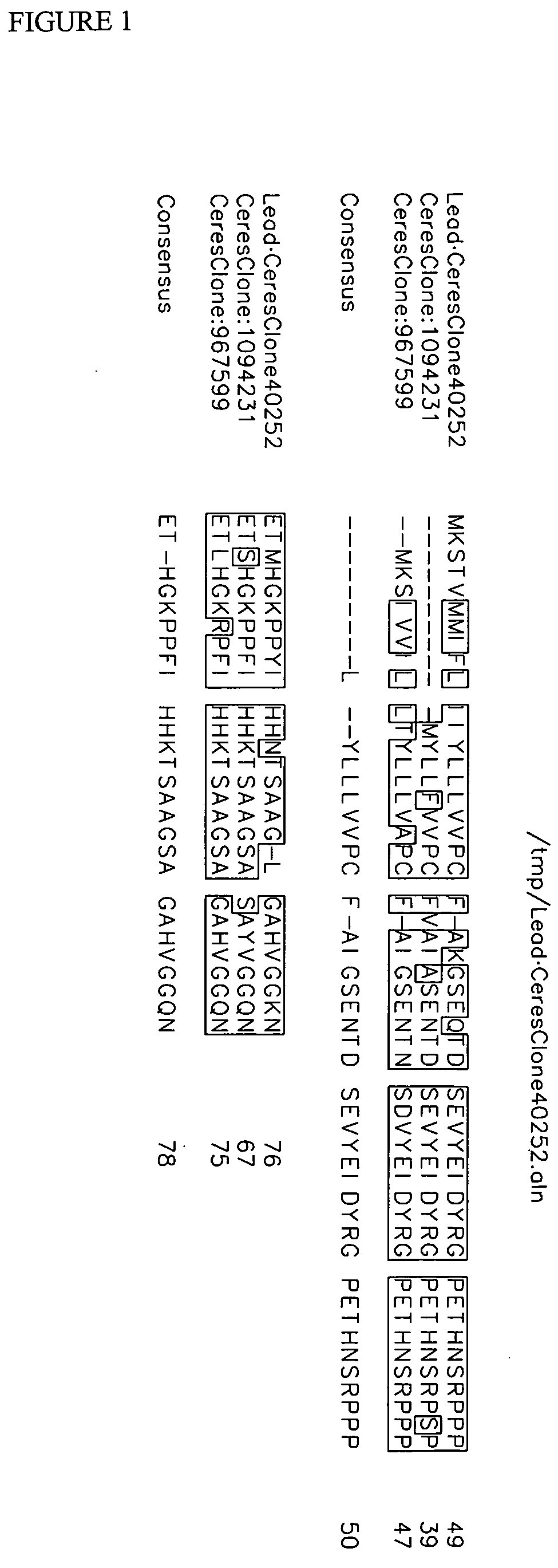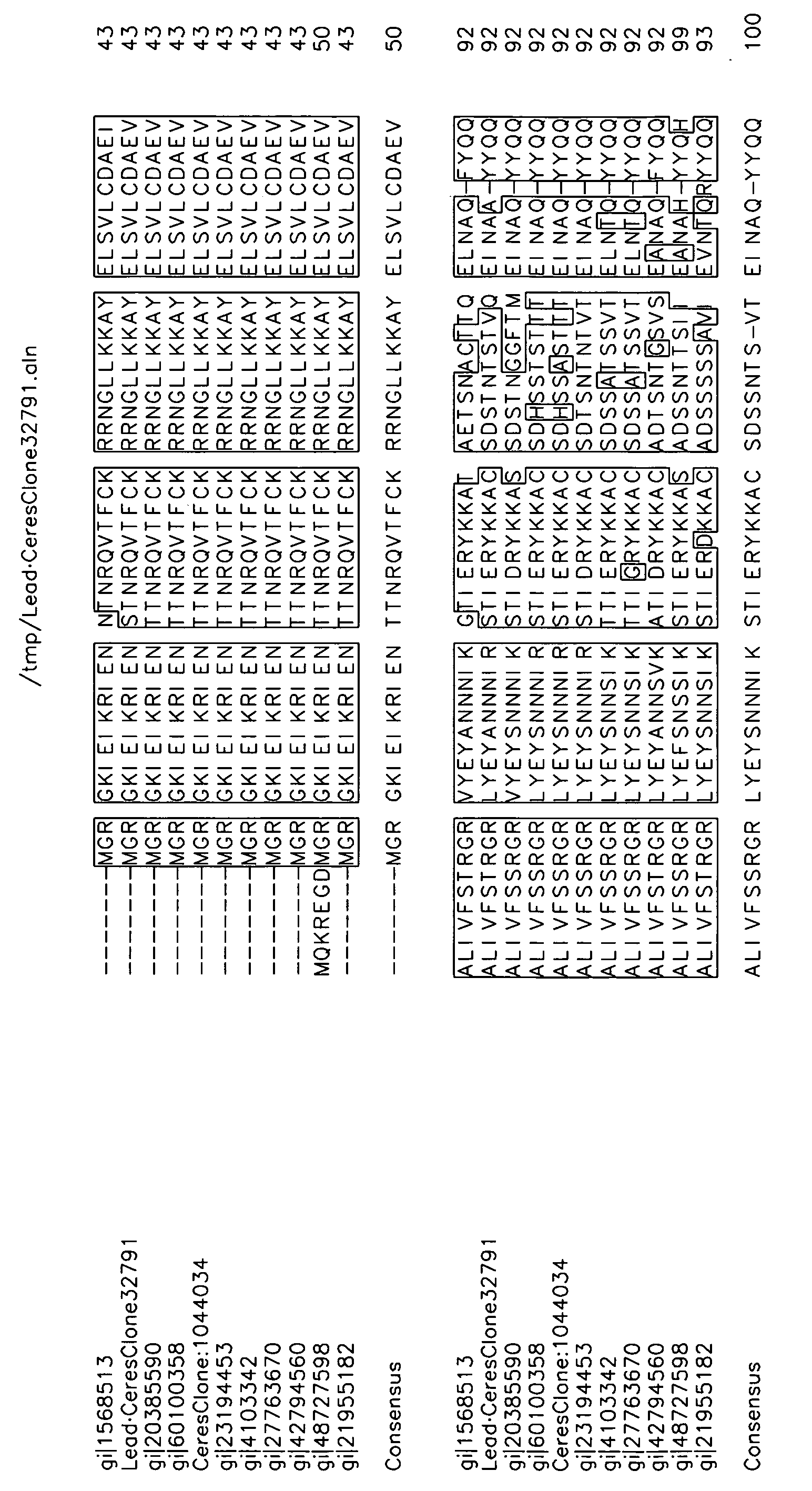Nucleotide sequences and polypeptides encoded thereby useful for modifying plant characteristics and phenotypes
a technology of nucleotide sequences and polypeptides, which is applied in the field of isolated polynucleotides and polypeptides encoded thereby, can solve the problems of time-consuming and labor-intensive, and achieve the effects of increasing biomass production, increasing yield, and increasing the photosynthesis ra
- Summary
- Abstract
- Description
- Claims
- Application Information
AI Technical Summary
Benefits of technology
Problems solved by technology
Method used
Image
Examples
Embodiment Construction
1. DEFINITIONS
[0013] The following terms are utilized throughout this application: [0014] Chimeric: The term “chimeric” is used to describe genes, as defined supra, or contructs wherein at least two of the elements of the gene or construct, such as the promoter and the coding sequence and / or other regulatory sequences and / or filler sequences and / or complements thereof, are heterologous to each other. [0015] Constitutive Promoter: Promoters referred to herein as “constitutive promoters” actively promote transcription under most, but not necessarily all, environmental conditions and states of development or cell differentiation. Examples of constitutive promoters include the cauliflower mosaic virus (CaMV) 35S transcript initiation region and the 1′ or 2′ promoter derived from T-DNA of Agrobacterium tumefaciens, and other transcription initiation regions from various plant genes, such as the maize ubiquitin-1 promoter, known to those of skill. [0016] Domain: Domains are fingerprints ...
PUM
| Property | Measurement | Unit |
|---|---|---|
| melting temperature | aaaaa | aaaaa |
| temperature | aaaaa | aaaaa |
| Tm | aaaaa | aaaaa |
Abstract
Description
Claims
Application Information
 Login to View More
Login to View More - R&D
- Intellectual Property
- Life Sciences
- Materials
- Tech Scout
- Unparalleled Data Quality
- Higher Quality Content
- 60% Fewer Hallucinations
Browse by: Latest US Patents, China's latest patents, Technical Efficacy Thesaurus, Application Domain, Technology Topic, Popular Technical Reports.
© 2025 PatSnap. All rights reserved.Legal|Privacy policy|Modern Slavery Act Transparency Statement|Sitemap|About US| Contact US: help@patsnap.com



